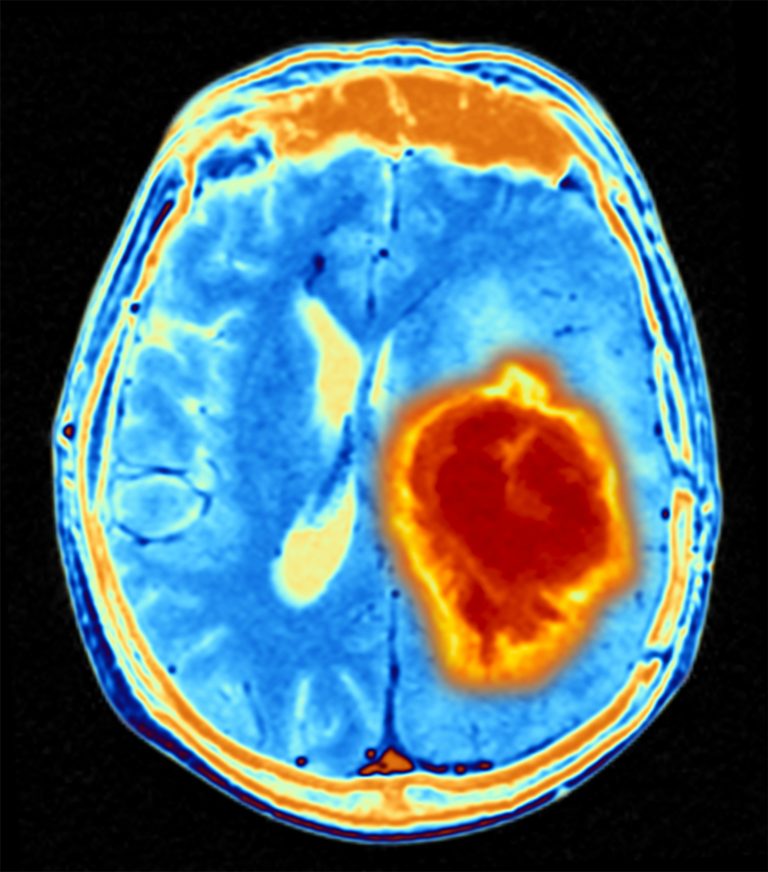
New findings from USC Norris Comprehensive Cancer Center suggest that cancer’s spread in the brain may not be random, but rather is dependent on where the cancer originated in the body. Specifically, these researchers found that bilateral temporal/parietal and left frontal lobes are susceptible to lung cancer, right frontal and occipital lobes to melanoma, cerebellum to breast cancer, and brainstem to renal cell carcinoma.
“We discovered that different types of cancer are more likely to show up in specific parts of the brain once they metastasize, indicating the location of tumors follow a distinct pattern,” said senior author Gabriel Zada, M.D., brain and tumor neurosurgeon with Keck Medicine of USC and a member of USC Norris and director of the USC Brain Tumor Center.
The researchers expect these findings will not only help predict how specific cancers will spread in the brain, but also advance understanding of how brain tumors grow. The study appeared in Journal of Neurosurgery.
The lifetime incidence of metastatic brain tumors is between 20% and 45%, with an estimated 200,000 new cases per year in the US alone. Patients with such tumors have a life expectancy of no more than six months even with aggressive treatment.
The researchers collected data from patients with metastatic brain cancer treated using stereotactic Gamma Knife, which is a minimally invasive, targeted form of radiosurgery used for brain tumors and other lesions. This technique allows surgeons to define the coordinates of a brain tumor with precise accuracy.
This study covered five common types of cancer—melanoma, lung, breast, renal and colorectal—in 970 patients with approximately 3,200 brain metastatic tumors treated at Keck Medical Center of USC from 1994-2015. They then created two predictive mathematical models to analyze the exact locations of brain metastases based on the primary cancer origins. They were called Predictive Topographic Models (regional brain metastasis echelon model [RBMEM]) and Brain Region Susceptibility Model [BRSM]. After their development they were independently validated.
RBMEM showed that distinct regions of the brain were relatively susceptible to certain types of cancer, while BRSM provided the probability of each cancer metastasizing in certain brain regions. Both models delivered similar results as to which areas of the brain were most likely to develop cancer-specific tumors.
The researchers say these results could be useful in prevention and treatment of brain tumors.
“It may be that cancer cells have the ability to adapt to regional microenvironments in the brain that allow them to colonize and progress, while other areas of the brain are inhospitable to the same cells,” said Josh Neman, Ph.D., assistant professor of neurological surgery and physiology and neuroscience at the Keck School of Medicine of USC, scientific director of the USC Brain Tumor Center and lead author of the study.
“If we can understand what factors either facilitate or block the process of metastasis, such as certain chemicals or neurotransmitters in the brain, there might be a way to intervene and prevent a cancer from metastasizing in the first place or treat it once it has spread,” Neman added. “In fact, we are already conducting studies to learn why certain areas of the brain are not receptive to certain cancer cells in hopes of developing better targeted therapies for patients.”
Zada and Neman are currently using the data from this study to participate in an international trial involving multiple sites to further study the patterns of brain metastasis based on primary cancer type.













